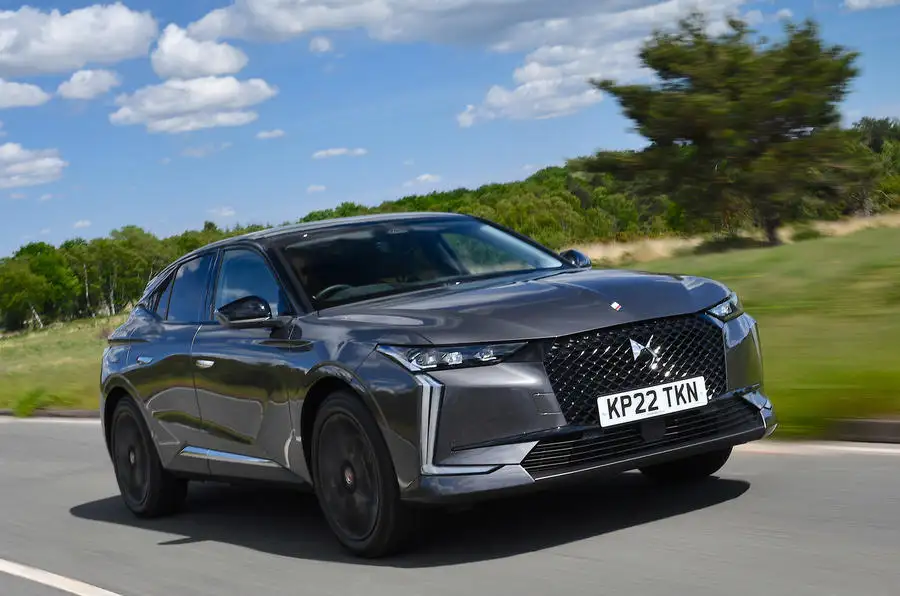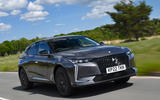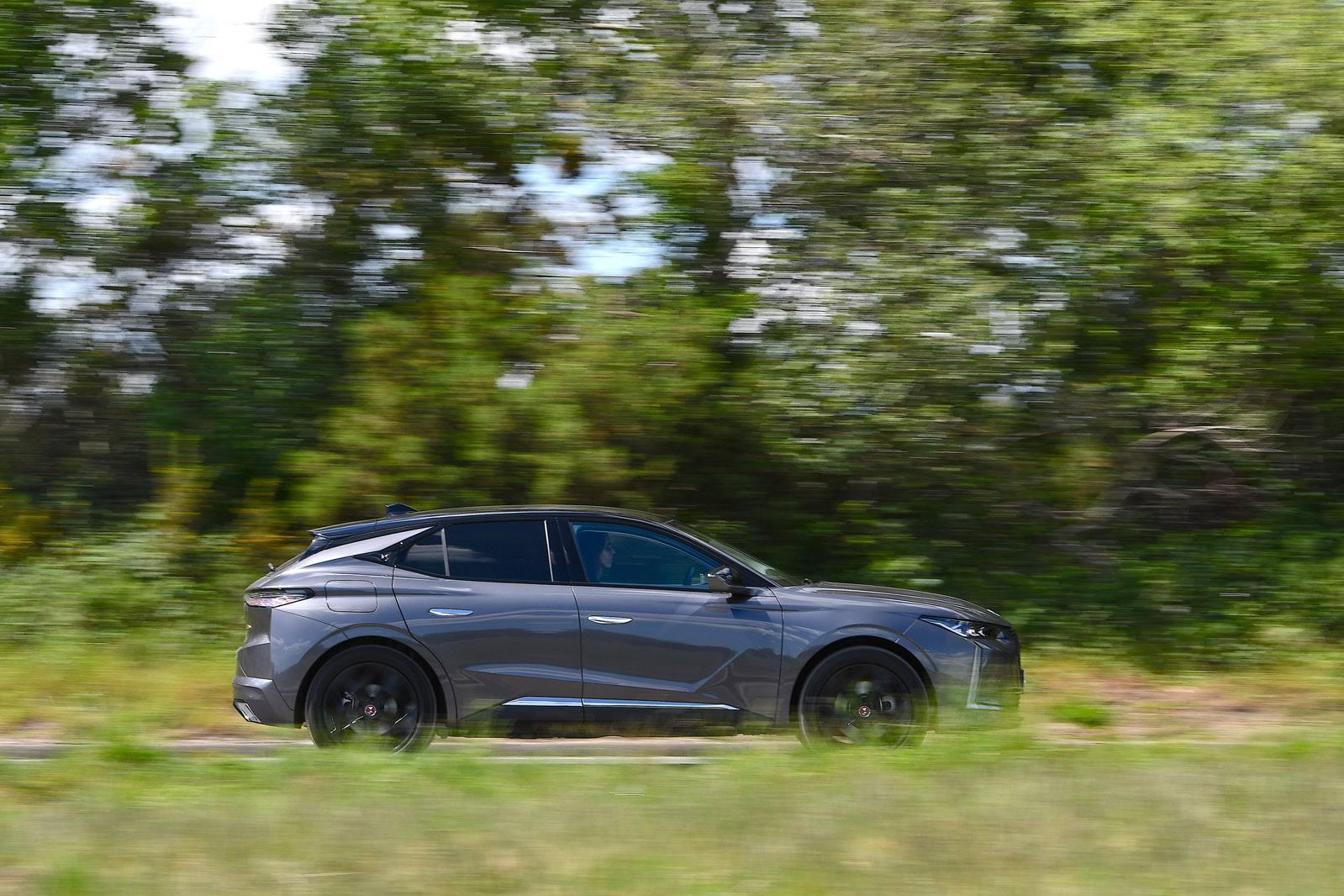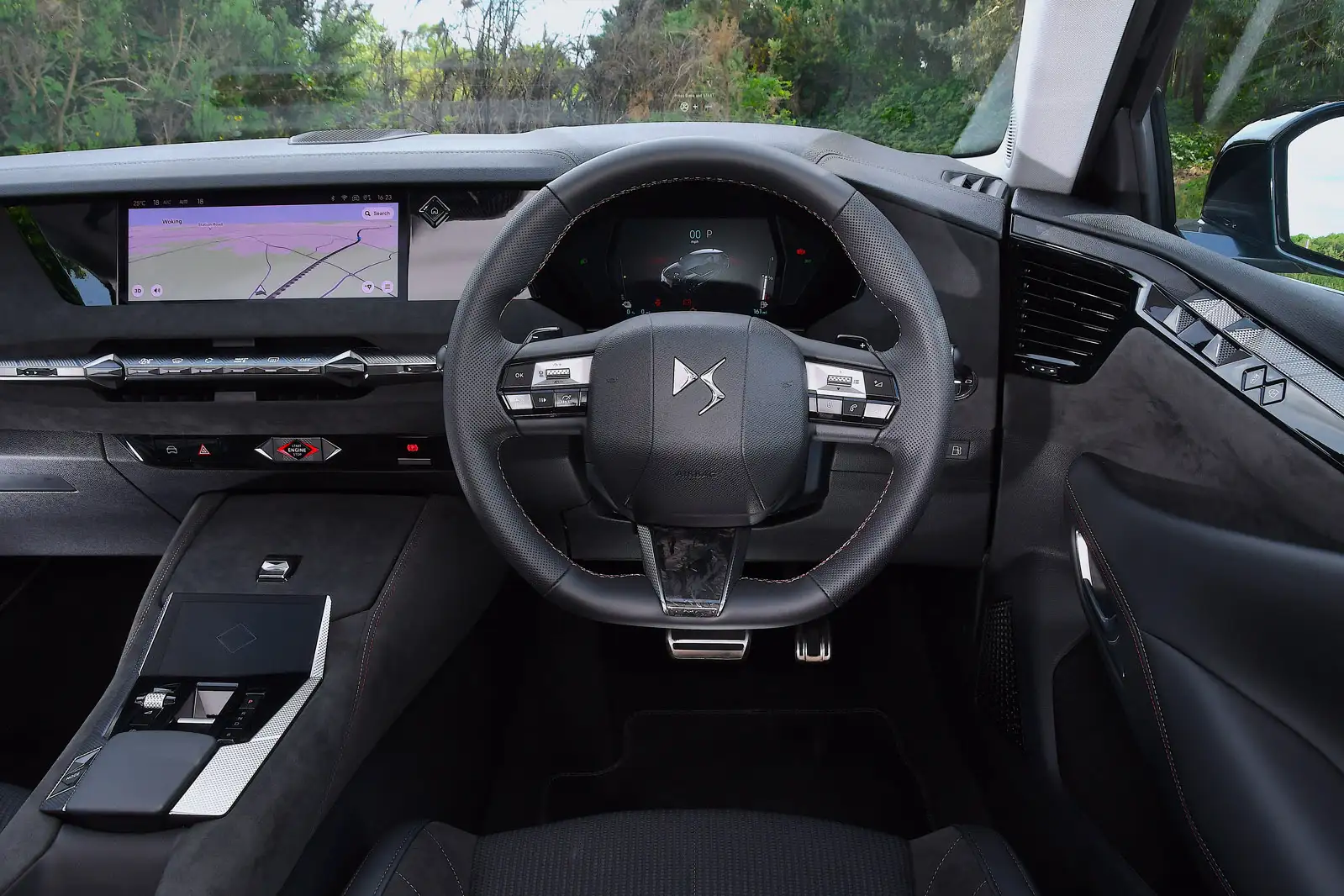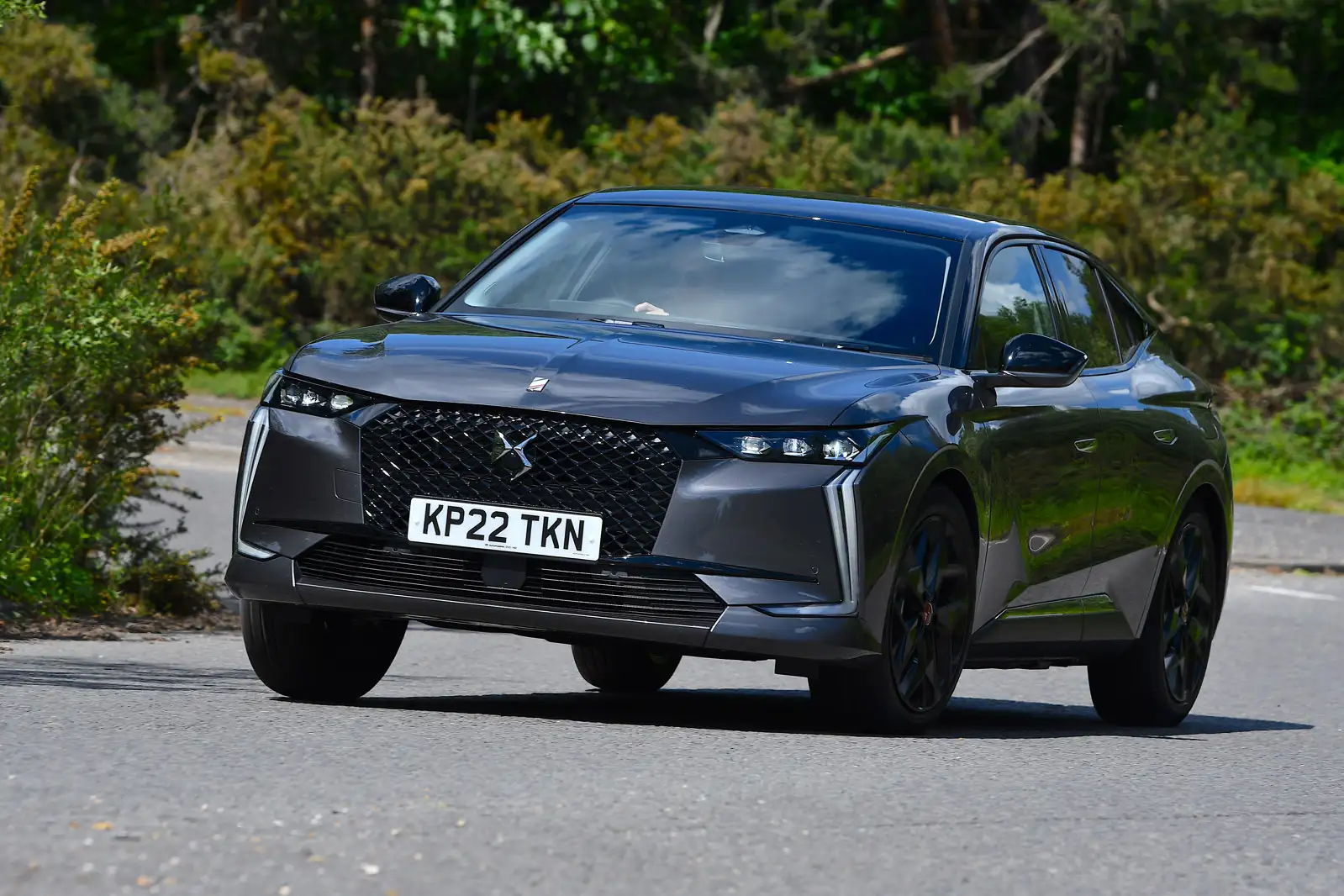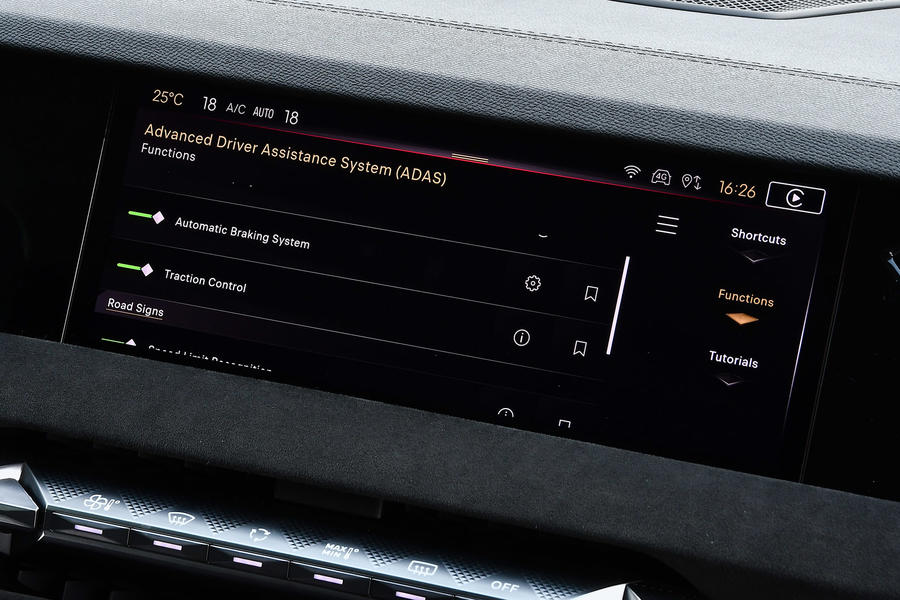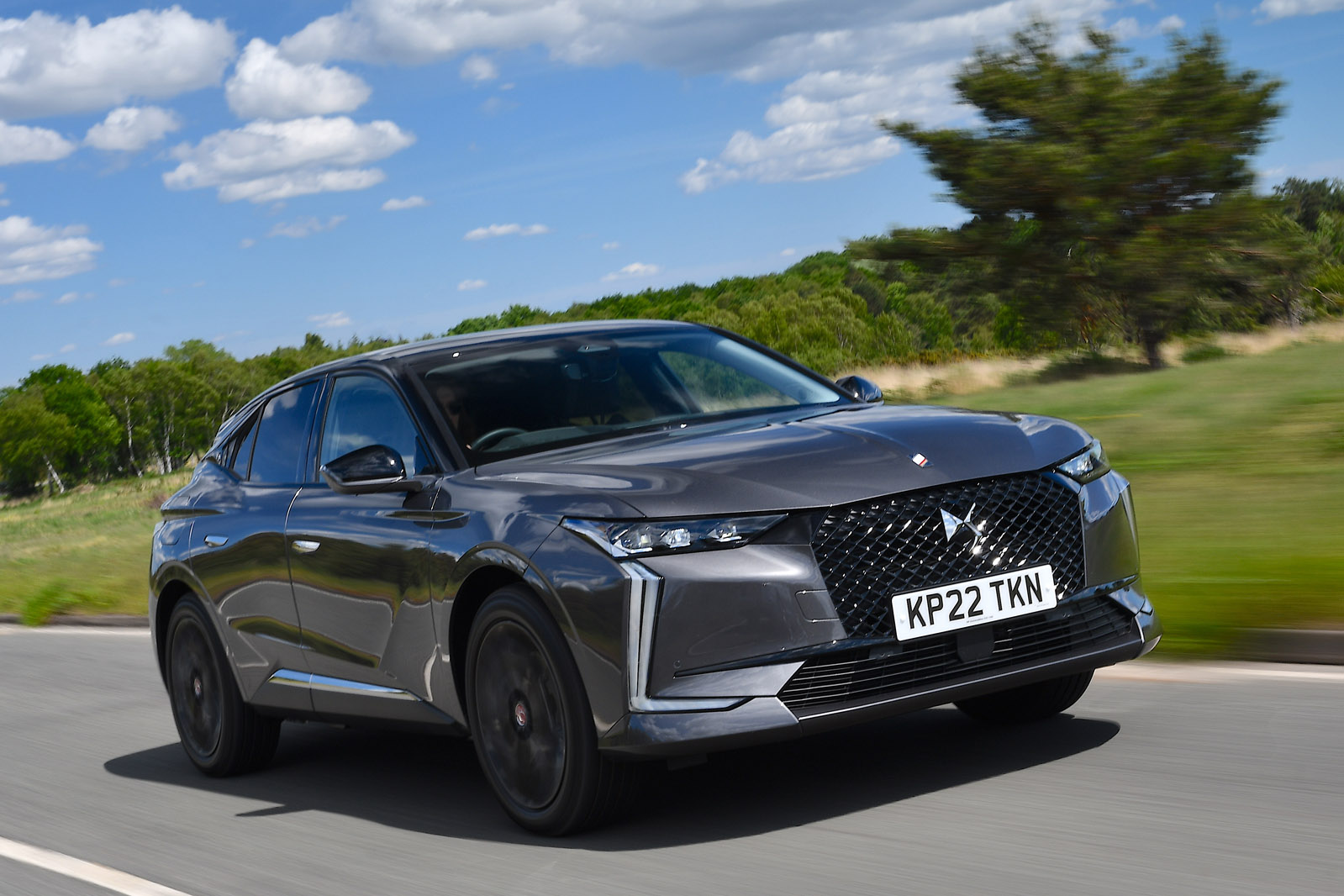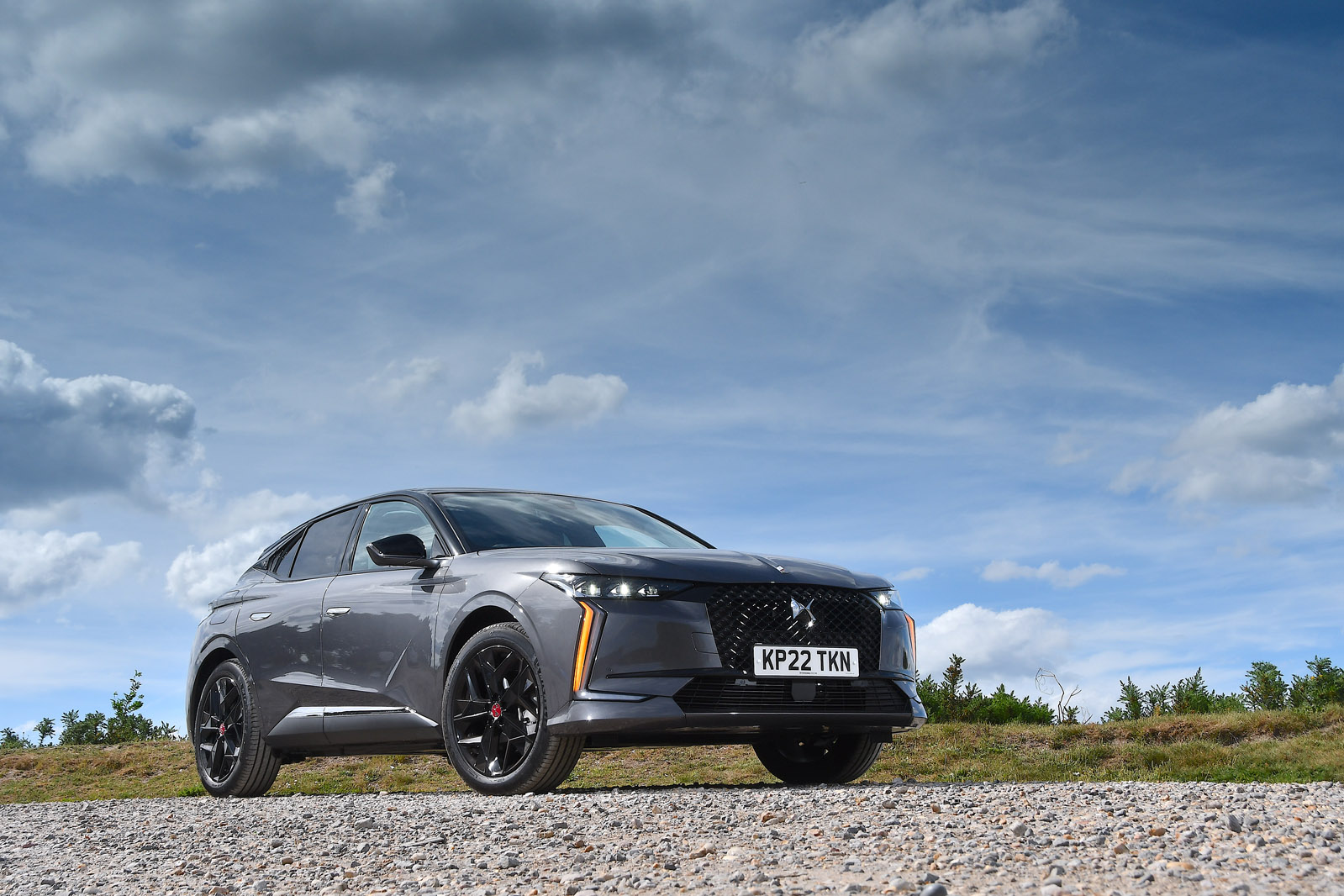The interior of the DS 4 will be the highlight for many, while others will no doubt be turned off by the gimmicky, even chintzy details.
In recent years, DS has made diamonds its trademark. They’re a motif in the grille and in the rear lights, and they’re all over the interior. The designers are committed to the look, and it does give every DS a recognisable style. And thankfully the eye-catching design hasn’t been penny-pinched to mediocrity: the materials are mostly pleasing to the touch. Yes, you can tell the window switches are plastic, but then this isn’t a £100,000 car. If the Alcantara-heavy style of our Performance Line+ 4 isn’t to your taste, other versions get more leather.
Fans of light-coloured interiors are out of luck, though, because apart from the very dark brown leather available on Rivoli trim, it’s black and grey all the way.
Perhaps it was a result of our test car being an early production example, but while most of the interior felt reassuringly solid, there were one or two quality issues: the driver’s headrest felt very wobbly, there were some loose trim pieces in the footwell and the start/stop button needed quite a firm press to respond.
Every 4 has a 7.0in digital gauge cluster and a 10.0in central touchscreen, and higher trim levels (like our car) also get a head-up display that’s projected neatly onto the windscreen. All can be configured to your own taste; you can cycle through different layouts of the gauge cluster and head-up display using the column stalks.
The 4 has far from the roomiest seats in its class, particularly in the rear. With 660mm of rear leg room, it’s considerably tighter than the Mercedes-Benz A-Class’s 720mm or the Seat Leon’s 700mm, let alone the Cupra Formentor’s 760mm.
It claws back some points with its boot, which at 390-1190 litres (430-1240 for non-hybrids) is much roomier than the A250e’s 310-1120 litres or the Audi A3 PHEV’s 280-1100 litres. That said, it’s unfortunate DS didn’t include convenience features like hooks, dividers or a dedicated place to store the charging cables.
Multimedia system

Full marks to the DS press office here, because our test car came with a handy quick start guide to explain how you can customise the centre screen, driver display, head-up display and touchpad in the centre console with various widgets.
A good user interface should really be self-explanatory, though. Still, being able to adapt it to your personal preference compensates for some usability issues. One annoyance is that the climate controls aren’t permanently accessible.
You can configure the home screen to display both sat-nav and temperature control, and there is a physical home button, but it’s still awkward. Use Apple CarPlay or Android Auto and that will take over the whole screen.
We found the Iris voice assistant (Apple’s Siri might have something to say about that name) better than most; and the configurable shortcuts on the touchpad are handy, but they’re no substitute for some physical buttons, especially as the screen can be slow to respond.


